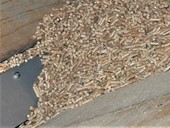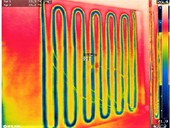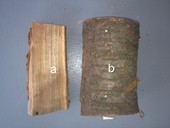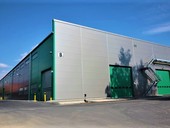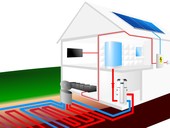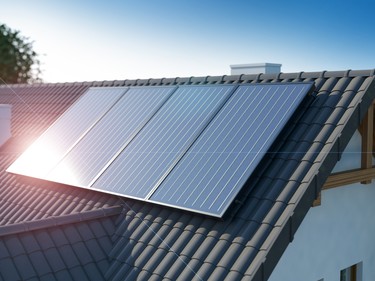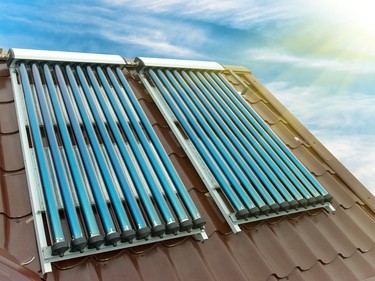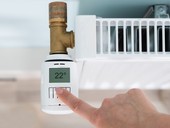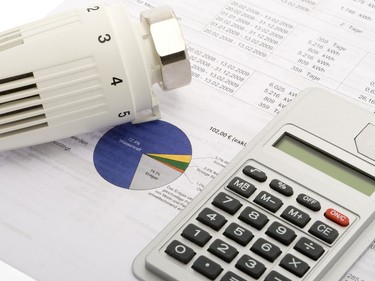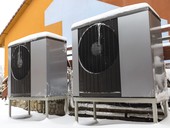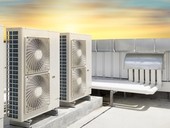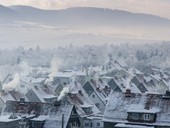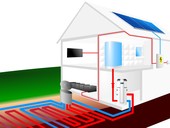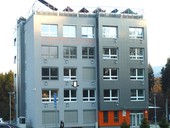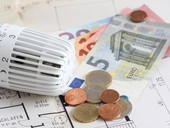As of 1 January 2020, the standard ČSN EN ISO 20023 (83 8205) dealing with safe handling and storage of wood pellets is in force. Among other things, the standard addresses the design and construction of pellet warehouses for small consumers.
Archiv článků od 7.10.2019 do 23.3.2020
Due to long term cooling of the ice ring it may happen that subsoil was affected, bulged and consequently nonreturnable destroyed in case the structure was built on high-risk soil. Sub-soil heating system was tended to be prevention of undercooling and step-by-step freezing of subsoil. Purpose of the paper is evaluation of heat flow in the structure depending on heating fluid temperature and thermal insulation thickness.
Methods and instrumentation for injection quality measurement in heat pump boreholes including measurement of groundwater flow through the borehole outside the partly grouted borehole exchanger tubes have been developed in the Czech Republic. A Semtex charge has been developed for the rock massive repair, which reliably disconnects the ground exchanger tubes without serious impacts on the surrounding rock environment and buildings. The resulting hole can then be used for re-grouting, thus preventing undesirable vertical water flow through the borehole.
The article acquaints readers with the situation on the European and world market for hybrid photovoltaic-thermal (FVT) collectors. This year, FVT collectors first appeared in the world statistics of solar thermal systems as a significant part of the market. However, their installations are still rare in the Czech Republic.
This article aims to clarify especially for the general public, the principle of the chimney draft and simultaneously explain its importance to assess the functioning of the flue path. It demonstrates that the measure can not replace a chimney control, or clearly describe its functionality, but it is just one of the many immediate operational parameters.
In recent years, we have seen a steady increase in the amount of data that is measured and recorded by measurement and control systems. Typically, these are hundreds to tens of thousands of readings per building. The question arises as to whether these data are properly utilized, extracted. The aim of the paper is to present the possibilities provided by current technologies and analytical software tools for evaluating data measurements related to the operation of heating systems.
The paper deals with the influence of climatic conditions on the efficiency of operation of air-water and ground-water heat pumps in domestic hot water preparation. Simulation analysis was performed for domestic hot water abstraction by a family of four in different climatic locations in Europe. It has been found that the efficiency of both types of heat pumps does not differ substantially. The surprising conclusion is that the considered ground-water heat pumps are slightly more efficient in hotter regions for hot water preparation, while air-water heat pumps are slightly more efficient in climatically mild and colder locations.
The paper shows the difference in the economic parameters of the use of heat pumps in multi-dwelling buildings between the case of reconstruction and new building. The examples show the balances of two specific studies prepared in 2017 and 2018 for customers. While heat pumps in apartment building reconstructions can be advantageous only at relatively high energy prices above 700 CZK / GJ, in new buildings they can be an economical source of heat.
Increasing the thermal insulation properties of walls, roofs, floors and windows has a positive effect on reducing heat loss and energy need for heating. However, when assessing the energy need for cooling in buildings with conditioned indoor environment, this tendency to increase the thermal insulation capability may lead to an increase the energy need for cooling, when measures to reduce heat gains by transparent structures are not applied.
Decree No. 269/2015 Coll. I consider it one of the worst regulations I have ever encountered. I start from the experience of people who asked me for advice on what to do when they have winter at home and yet the highest share of heating costs in the whole house. At first I bet on the effect of heat parasitizing unoccupied neighboring apartments, but then I thought of looking at positional coefficients.
The paper presents an analysis of PV system usage without a battery storage to cover electricity consumption for single family house with 4 persons and heat pump as a heat source for heating and preparation of domestic hot water. The result of the analysis shows the importance of using a sufficiently short time step of load profiles for correct assessment of solar fraction of PV system. Simplifying chart for fast estimation of solar fraction in a given application (heat pump, user energy) has been developed.
In the contribution, we are focused on the quality of the heat-moisture microclimate and the aspects that affect it. We chose one office room in the building of the Research Center of the University of Žilina (UNIZA), oriented to the west. The subject of the measurements were all physical components of the indoor environment, the effect of solar radiation through window constructions and floor temperatures using low-temperature radiant floor heating. The contribution describes measuring methods, results of measurements and related partial conclusions for cold climatic conditions of the year.
Unfortunately, the fairness in the allocation of the cost of heating flats in multi-dwelling buildings is most often taken by people who have no idea on what principles the heating of these houses is based. Out of ignorance they then create a problem where it is not at all, and to build a “solution” to construct a bizarre structure. The problem is that the field of heating revolves around the physical quantities of heat and temperature, whose names sound very similar in Czech, and therefore people often confuse them, even though they are completely different in meaning.
zpět na aktuální články
